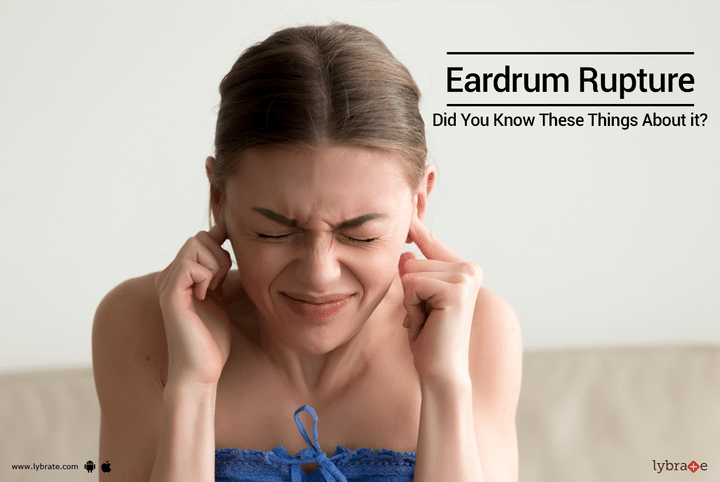Eardrum Rupture - Did You Know These Things About it?
Tympanic Membrane, commonly known as eardrum, divides external parts of the ear (consisting of Pinna or Auricle and External Auditory Cavity) and the middle ear (Tympanic cavity). The function of the Tympanic Membrane is to transmit the sound of air via ossicles of the middle ear to the oval window in the cochlea. It converts and amplifies vibration in air to the vibration in fluid.
An eardrum rupture is a small hole or tear in the thin tissue which divides the external ear canal and middle ear. A person with a ruptured eardrum may feel a clap of thunder or earache. This may also lead to hearing loss. An eardrum rupture is also known as a perforated eardrum or punctured eardrum.
Causes of Rupture Eardrum:
There are many causes of ruptured eardrums, and some of the most common causes are listed below:
Ear Infection:
Infections are one of the most common causes of ruptured eardrums. During an ear infection, the fluid accumulates in the ear, which builds pressure causing a tear of Tympanic Membrane.
Change in Pressure:
Activities that cause pressure changes in the ear may lead to a rupture in the eardrum. It is called Barotrauma. This mainly happens when the pressure of the external ear is drastically different from the inner ear.
Activities which may cause Barotrauma are:
-
Flying in an aeroplane
-
Scuba diving
-
Shock waves
-
Driving at high altitudes
-
Forceful and direct impact to the ear
Ear Injury:
Ear injuries may also perforate the eardrums. Any ear injury or head injury on the side of the ear may break the Tympanic Membrane and lead to ruptured eardrums. Injuries that may harm eardrums are:
-
Getting hit in the ear
-
Injuries in which a person falls on his/her ears
-
Ear injuries during sports
-
Car accidents
Acoustic Trauma:
Damage to the ear due to noise or loud sounds can also rupture the eardrum. However, the evidence of this is yet to be found.
Other causes include skull fractures, foreign objects, and severe head trauma.
Symptoms of Rupture Eardrum:
-
Earache
-
Pus or blood released from the ear
-
Hearing loss
Diagnosis for Eardrum Rupture:
Diagnosis entails:
-
Otoscope Exam: In this type of examination, doctors use specialised instruments with light to see the ear canal.
-
Audiology Exam: In this type of examination, doctors test the hearing range and capacity of the person.
-
Tympanometry: In this type of test, doctors insert a tympanometer into the eardrum to check the ear responses on pressure change.
Treatment of Rupture Eardrum:
There are many treatment options available for rupture eardrum. Doctors advise these treatments depending upon the severity and condition to provide relief from pain, eliminate infection, and prevent hearing loss in future. Some of the treatments are listed below:
Antibiotics:
If the condition is not critical, doctors usually prescribe medicines to the patient. These medicines help to clear up the infection and protect a person from developing a perforated eardrum. Doctors may also prescribe some ear drops along with medication.
Patching:
In this type of treatment, doctors place a medicated patch on the eardrum. This patch encourages tears to heal and grow back together.
Ruptured eardrum can be easily cured with these two methods of treatment. However, in rare cases, doctors recommend surgery to patch the tear. This type of surgery is known as Tympanoplasty. In this method, the surgeon takes a part of tissue and grafts it over the tear of the eardrum.
Conclusion:
Above are some of the common methods of treating ruptured eardrums. However, it is always advisable to consult a doctor before reaching any conclusion. Also, taking some preventive measures like keeping ears dry, clean, infection free, etc. can help a person protect his/her ears from being punctured or ruptured. Do not insert anything inside the ear canal in an attempt to clean ear wax.



+1.svg)
